Camera Bags, Camera Straps, Design, Photography Gear, Travel
Why We Shoot Film Cameras
We make camera straps and camera bags. So who really cares what we shoot with? We’re a company. Not a photographer. Well, yes and no. Hawkesmill was founded by photographers, for photographers. Every one here has put in the time as professional photographers. We’ve made our living from shooting and doing nothing else. Why we shoot film cameras matters to us. And apparently, it matters to others as well.
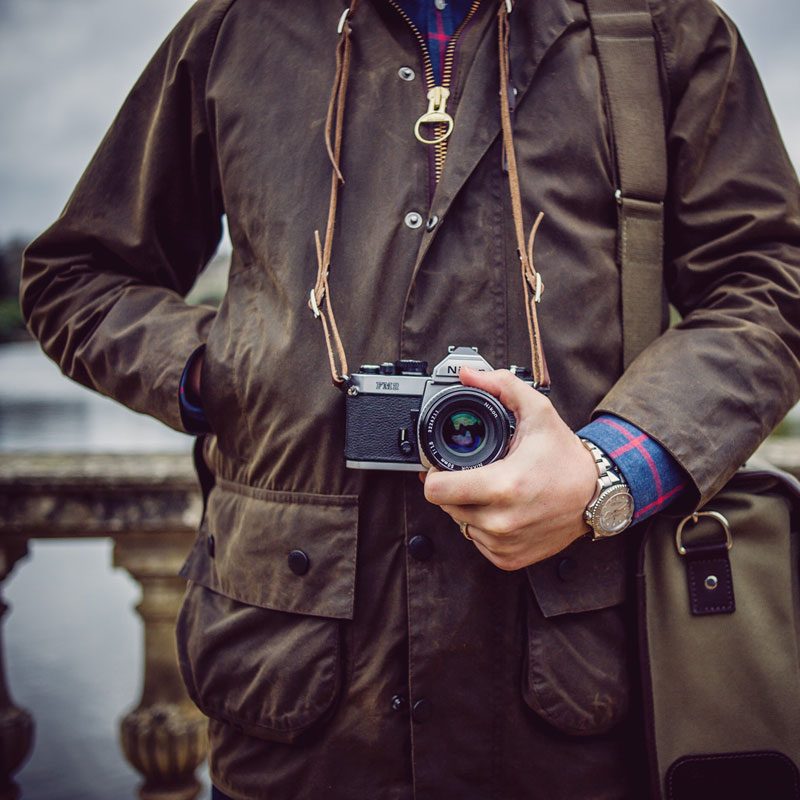
Recently, we came across a review of one of our bags on a leading photo website. The review praised our camera bags and yet, the review still received a negative comment. We’re used to this. It’s just the nature of the internet. But the comment struck us as odd. It said we at Hawkesmill were Hipsters because most of the images on our website were of film cameras. The reviewer responded with, “You have a very broad definition of Hipster.” And we agree.
But this got us thinking… why do we have so many film cameras on our website and social media feeds? Well, the answer is simple, we love photography. It is our passion. None of us that work here want to do anything else. We eat, sleep and daydream about photography. It drives us to make the products we make.
Yes, but what about film cameras are we specifically drawn to? And that is going to take a much longer discussion. So get a cuppa tea and enjoy the read. Hint… this is long. If you want to skip to the film camera bit, scroll to the bottom. Otherwise, enjoy!
Film is Dead. All Hail Digital.

A few years ago FILM WAS DEAD. Really dead. Nikon even stopped supporting it’s incredible Film scanner, the Coolscan 5000 ED. Kodachrome was discontinued, along with a host of other film stocks. Kodak went bankrupt. Film cameras, even really great ones, were dirt cheap on auction sites. You could find some outstanding cameras in antique shops at bargain prices. I once spotted a mint Rollei 35 in an antique shop in Rye for £20. I wish I had bought it back then. Compared to today’s prices, film cameras were a bargain several years ago. But then something happened. The younger generation started snapping (no pun intended) up these cameras and using them to create the most amazingly artistic Instagram posts. And they shared their new found love of film on YouTube. Even the Kardashian’s/Jenner’s (I’m never quite sure who’s who) got into the mix and started using film cameras. And those cheap, but high quality film cameras are not so easy to find anymore.
We did not jump on the bandwagon. I have owned film cameras and shot with film cameras since 1996. I started with film photography, a Kodak Cameo point and shoot in ’96. I then did nearly every photography course one could do at university and was even the darkroom assistant for several semesters. This afforded me access to all of the chemicals and enlargers at almost any time I wished. So I have not come to film cameras based on this new wave of enthusiasm for it. Far from it. I have always had a fondness for it.
However, recently, my fondness has grown deeper and deeper. Why? Why is film photography better than digital? Actually, that’s a bad question. Comparing film photography to digital is completely useless. They are both incredible mediums, that get one to a specific, desired result. A better question would be: what look are you going for in your photography? And what do you want your photography experience to be like?
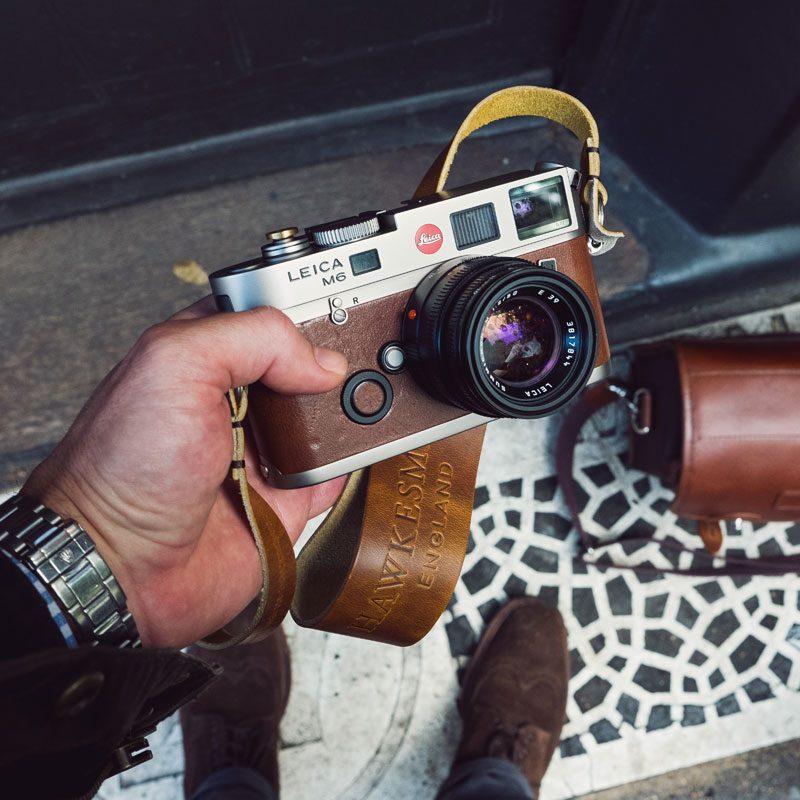
We all have GAS!
For the first 8 years of shooting film, I had 4 film cameras: the Kodak Cameo, Minolta Maxxum, Canon AE2 and a Nikon FM10. I captured some of my favorite images with these cameras. There was essentially nothing they couldn’t do. From photographing Half Dome in Yosemite, to backpacking across Europe with them. I never said to myself, “I need more resolution.” Or, “ISO 400 is just too grainy.” Be the way, Kodak Portra 400NC was just as incredible in 2000 as it is today! Although it’s now just called Kodak Portra 400, instead of NC and VC. The total camera body cost (used) for the above was less then £1,000 for 8 years of shooting.
When digital photography first came onto the scene in late 2000, early 2001, it was mostly press photographers using digital cameras. I can remember seeing the newly released Canon 1D in Edinburgh during the Fringe Festival. It was incredible. It looked exactly like my Canon EOS 1V, but the grip was built in and there was a small LCD screen (very small) on the back of the camera. I was fascinated. A few years later, when prices came down, I bought one. My Nikon 5000 ED scanner and Fuji Provia 100F slide film (the greatest film ever made) gathered dust in my closet. The scanner sits there still, waiting for Nikon to support it again, so I can use it on an OS greater than Windows XP. I fear I shall be waiting a rather long time.
After the Canon EOS 1D I purchased the 1D Mark IIn. And then the 1Ds Mark II with a whopping 16.7mp. The images produced clogged up my hard drive in a few weeks and I then learned about external hard drives. I’ve had about a dozen of them over the years to keep hold of the thousands of photos I’ve taken with digital cameras. After the 1Ds Mark II I moved to the Leica M8 and was completely smitten with Leica cameras. Having never been able to afford one when I was younger. However, the poor ISO performance and relatively small file size meant that I didn’t keep it for long. After the Leica M8 I purchased the Nikon D300. A revolutionary prosumer camera. Not long after that Canon announced the 5D Mark II with video. And again, I upgraded. I used a pair of 5D Mark II bodies to photograph nearly 100 weddings and then the Mark III for years after that. Until again switching back to Nikon for the old D3, then the D700 and D810. The reasons for switching back to Nikon, was I wanted something a little less “perfect”. And I had heard the D3 and D700 had a very “film like” quality. Which is true. They are the most “film like” digital cameras I have ever shot with.
At this time, I did not do much professional photography. It was becoming a hobby again and Hawkesmill was taking up all of my time. So I moved to Fujifilm to save weight. And that is where I now stand. So, let’s count them: 9 professional, or prosumer digital cameras since 2006. Total cost: at least £15,000. Some of the above were bought new, some refurbished, some used. Of course, I didn’t need to “upgrade” that many times. And, some of the earlier cameras were at the dawn of digital photography. So of course things will get better and one will feel inclined to buy the newest thing.
My point is that GAS (gear acquisition syndrome) is real. And it’s a problem. It is much more prevalent with digital cameras than film. Just like it is prevalent with cars. We all want the latest and greatest. It’s just the way we are. A camera, like a computer, has a very limited perceived lifespan. Even in my 2012 MacBook Pro works perfectly well, I can’t help but be dazzled by the new thin, ultra sleek, modern ones out now. Which is why I “upgraded” last year. Worst decision ever. I really miss my 2012 version. And every time I go to insert an SD card into the slot on my 2018 version, I am disappointed to find it is not there. But, I digress…
Film cameras don’t age the same way
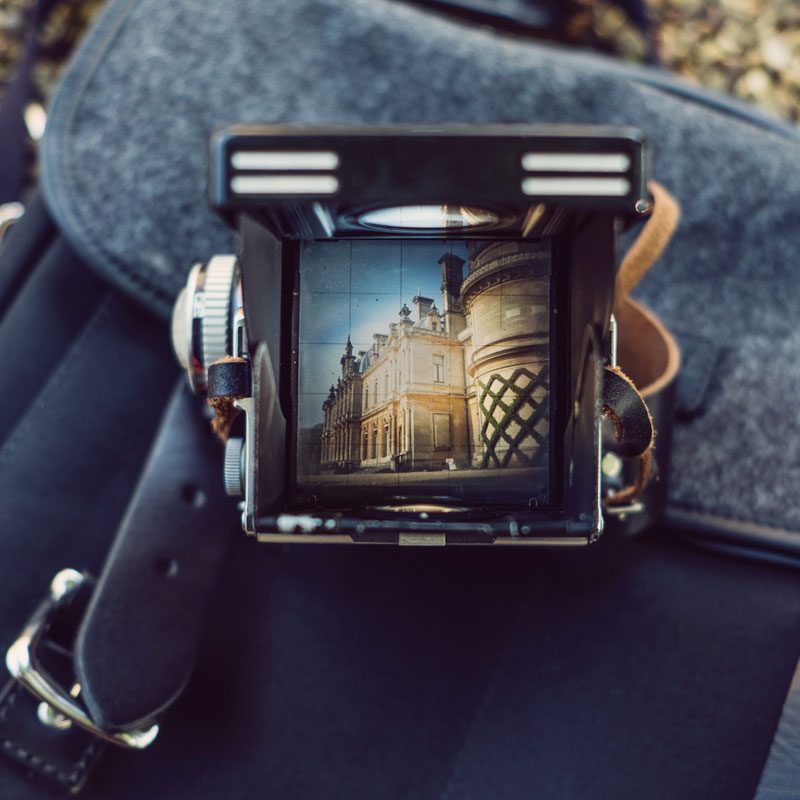
I have always had a small collection of film cameras: Leica M3, Leica M6, Nikon F2, Nikon F3, Nikon F4, Nikon F100, Olympus OM-10, Olympus OM-2, etc. No matter what happens in digital photography, I have the knowledge that I own, arguably, the finest analog cameras ever made. They will never become antiquated, or become obsolete. That’s already been done. Digital won. I will never feel like they aren’t as good as the newest model, that was just released. Those days are also gone. Nikon will never again release a Nikon F4 to supersede the F3. It’s been done. And those that favour the F4 own that camera and those that favour the F3 own it. The same is true for Leica, or any other brand. One never feels the need to obsessively upgrade.
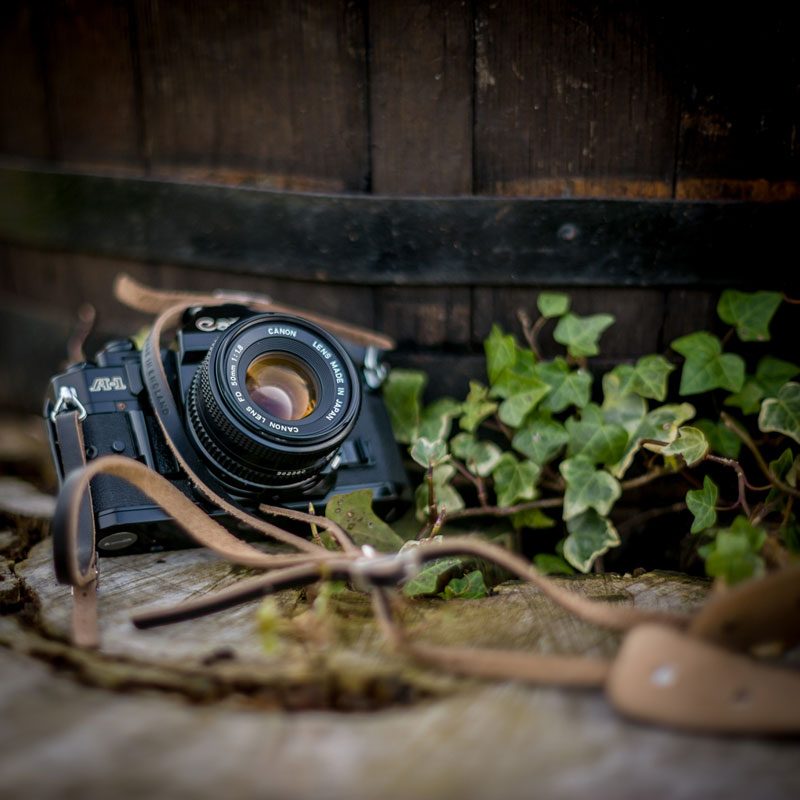
Who needs 693 focus points?
The latest Sony monster digital camera was just announced and it has a mind boggling 693 autofocus points. When I was starting out I used to shoot a lot of tennis matches. Hence, why I bought the Canon EOS 1V. It had the most advanced autofocus system at the time and all of the sports shooters were using it. It had a 45 point auto focus system and the shots made from it are some of the best sports shots ever taken. But before that, sports photographers got along with much less than 45 auto focus points. In fact, if we take it back quite a while, they only had 1 auto focus point and before that, NONE. So, who needs 693 auto focus points? Well, maybe nobody. But certainly having them makes the paid professional’s job easier.
But what about the rest of us mere mortals? Do we need 693 focus points, or do we simply feel the need to have the “latest and greatest”?
Surely 45 megapixels is enough?
I remember going on holiday and taking a few rolls of Fuji Velvia 50 and Provia 100F with me. I’d come back from my trip and drop them off at my local photo lab. They would give me in return a small paper bag and inside was a little box of perfectly mounted slides. I couldn’t wait to see them. I always laid them out nicely on the light box by the counter. The blues used to always dazzle me. In certain light, with a little underexposer, they always looked purple. It was incredible. I would lovingly place those slides into their protective sheets and pick out a few to have printed, either for framing, or for an album of shots from the trip. At best, I’d have a couple of dozen 4×6 inch prints made and if I was lucky an 8×12 inch, or 8×10 inch print made for framing.
These days it seems like most people simply post their images online, with only a few large prints ever being made. I can’t remember the last time I saw a photo album. I mean a real photo album. Not a printed book. Not that I don’t like photo books. I do. So how come we all want digital cameras with the highest resolution humanly possible? A Nikon D700 is perfectly capable of making 11×14 inch prints, or even 16×20 inches. I know, my favourite photo of my children was taken on a Nikon D700 and made into a 16×20, which hangs, lovingly over our fireplace.
I have heard the argument that one never knows when they’ll achieve the best shot of their lives. And surely it should be taken with the highest quality camera one can get. Yes, that is a very fair point. And I don’t disagree. But how large do you want to print this? Will you even print it at all? We only need cameras with exceptionally large file sizes in order to print, and, or crop. If you do either of those, I completely understand. Get the highest MP camera you can afford. If not, why worry?
If you can’t capture it with 3 frames a second you’re doing it wrong!
I wonder how many frames a second Henri Cartier-Bresson’s Leica did? Oh yeah, 1. Maybe 2 if he was really, really quick with his film advance lever. And he is the Godfather of the Decisive Moment. That split second when you capture something and forever entomb it onto celluloid. Well, in his day it was celluloid. This is another area that seems to be out of control in the photography world. Unless you are one of the top sports photographers on the planet, or a working press photographer, this doesn’t seem like it needs as much attention as it gets. But, nevertheless, we see frames per second on every camera write up, like it’s as important as an on off switch.
My camera goes to ISO 2 million!
Here is a little bit of camera geekery for you: photography means – “drawing with light”. That is the definition of the word. If you are shooting at ISO 2 million, how much light do you think is available? The answer, no surprise, not enough! And again, unless you make your living photographing lions in the dark (which, without strobe, or some other light source would look awful), or get paid to take photos of famous people with no available light, from a very long distance away, none of us need a camera that shoots at ISO 2 million. In fact, going by the sunny 16 rule, if we’re shooting outside, we very rarely need anything above ISO 400, or 800. If we’re shooting, say, a wedding, indoors and it’s very dark, we need to add additional light. No wedding photographer worth their merit would ever say, “It’s so dark in here. Let me boost the ISO up to 2 million. That will work.” No. It won’t. It will yield horrible, dark images. Photography means – “drawing with light.” Therefore, one requires light.
Why film cameras?
We now come to the answer: why we choose film cameras for most of our social media posts and nearly all of our website images. We simply prefer them. We find them a more pleasurable experience to work with. I shall use the following cameras as an example.
Leica M3 the world’s most perfect camera. Period!
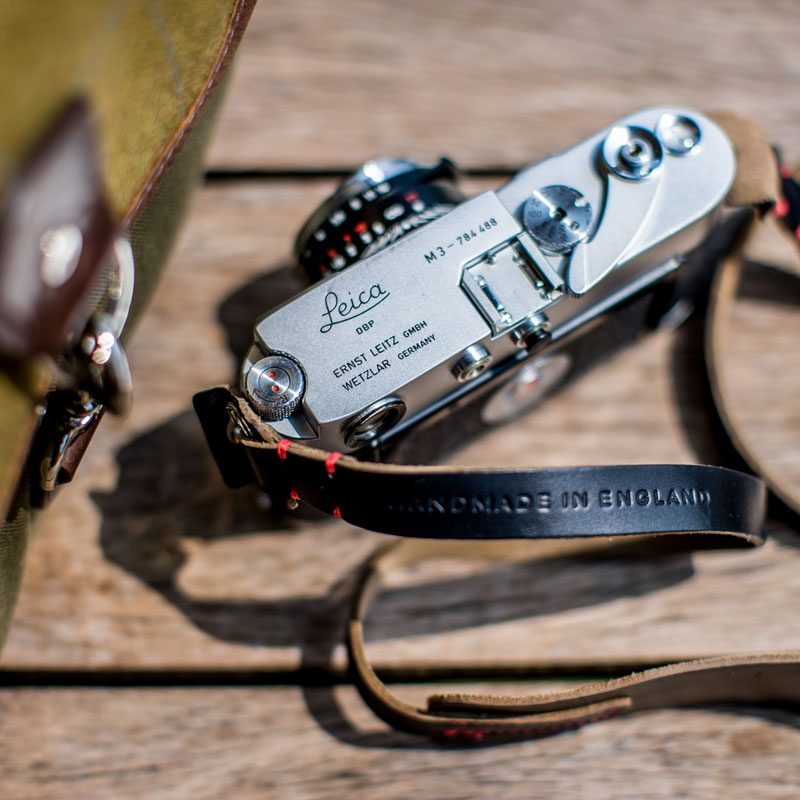
The Leica M3 started its life in 1954. It was Leica’s first M series camera. For a full rundown of this magnificent machine, I ask that you visit Hamish’s site 35mmc as he is far more gifted in the art of camera geekery than we are.
So how can this 60+ year old camera be universally known as one of the world’s best cameras? It doesn’t have 693 autofocus points, it doesn’t do 15 frames a second, it doesn’t even have a light meter. Those points are all true. But it does have the finest parts money could buy in 1954. And it is machined like a high end rifle. When you cock the film advance it is solid and definite. The entire body is made from brass. One of the world’s best materials for anti-corrosion and being able to take a beating. There’s not a single piece of plastic on it. Leica essentially remade the M3 by coming out with the M-A. But at more than £4,000 new, the M3 seems a perfectly capable machine to use instead, and for a fraction of the price.
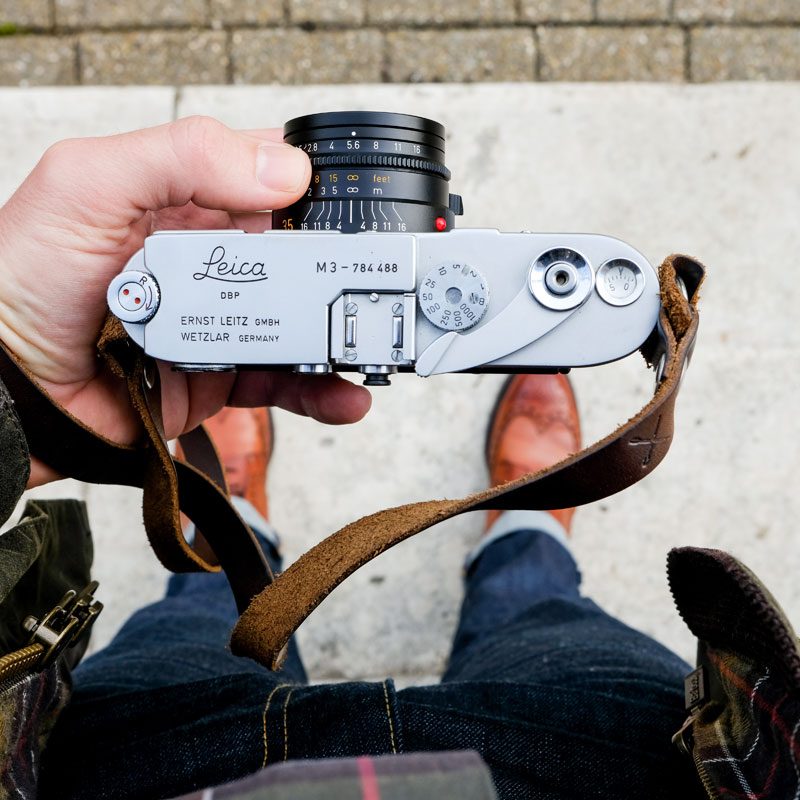
But the greatest thing is not what went into the Leica M3, but what one can get out of the Leica M3. Namely, a totally self-reliant photography experience. One that uses all of the knowledge gained in this wonderful art form. The camera cannot and will not do anything for you as a photographer. The Leica M3 pushes you to use the grey matter between your ears. You must know the Sunny 16 rule by heart. You must meter by instinct and experience alone, as well as focus manually. And God forbid, you ever get yourself into a situation where you’re shooting indoors with multiple light sources with dark shadows, bright highlights and everything in between.
One is likely to fold right then and there. I have been close to throwing the camera on the floor because I missed a shot. But then, I realise, it wouldn’t matter as the camera is made entirely of brass, and actually, the patina created by the camera sliding across the tiled floor, would actually enhance the looks, not detract from them. How many times have you said that with your expensive digital camera? I protected my Leica M8 as if it was my 3rd child. I used to stroke and pet it before bed. It had more grooming at night than my wife. I didn’t have to, but I felt the need to. I never wanted it scratched. It was a computer to me, not a camera. And I don’t want to scratch my computer. They are sensitive things. Anyone who has spilled even the smallest amount of water on a MacBook will know this well. That early morning trip to Apple in Covent Garden just isn’t as fun when you’re computer is in its death throes.
Nikon F3 the ultimate in function and form
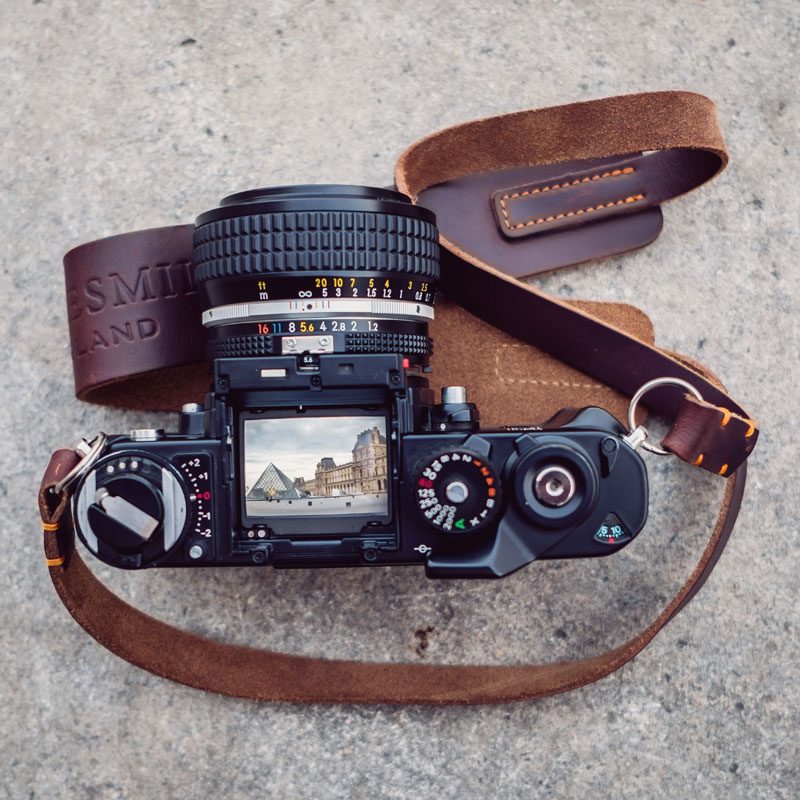
When they developed the Nikon F3, Nikon hired renowned Italian designer Giorgetto Giugiaro. And the result was a camera that was as beautiful as it is functional. Purists will denounce its electronics, but in the 40 years since its introduction, few F3s have ever failed. It is not an entirely mechanical camera, like the Leica M3. But it does many things that the Leica M3 cannot.
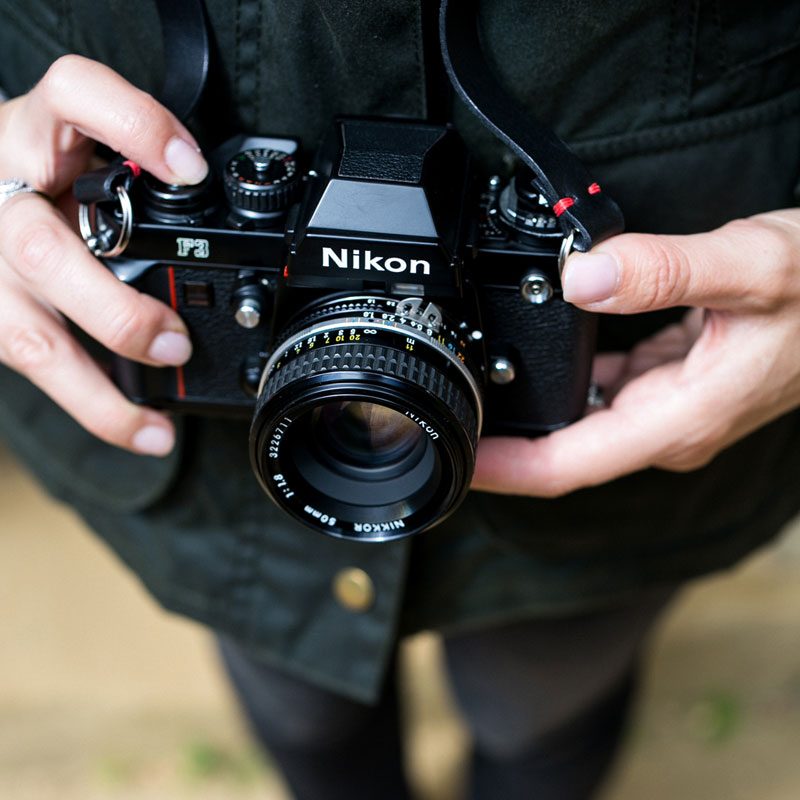
Made from brass, the Nikon F3 is solid and powerful. With perhaps the finest film advance of any camera ever made. Silky smooth doesn’t do it justice. It is poetry in motion.
And if you can get over the rather odd light meter display, it is an absolute joy to use. Exposing, composing and taking the shot is akin to driving a Ferrari. You can feel the inner workings. You can sense the quality in the solid hand grip, with its stylish red line down the front. Thank you Mr. Giugiaro. Long before Christian Louboutin adorned his shoes with black and red, Mr. Giugiaro used this colour combo on all Nikon F cameras from the F3 onwards. The Nikon F3 is a piece of photographic history. It was the first camera to blend modern mechanics, with artistic design. And that design is powerful, even today. Hold one and you’ll understand. Slap a Nikon 50mm f1.2 lens on it and you are in camera-heaven. The smooth manual focus and assertive slap of the mirror means one thing, quality. Phenomenal quality that is so very rare today. Quality that inspired us as a company when we began our journey to make the finest camera bags and camera straps on the market today.
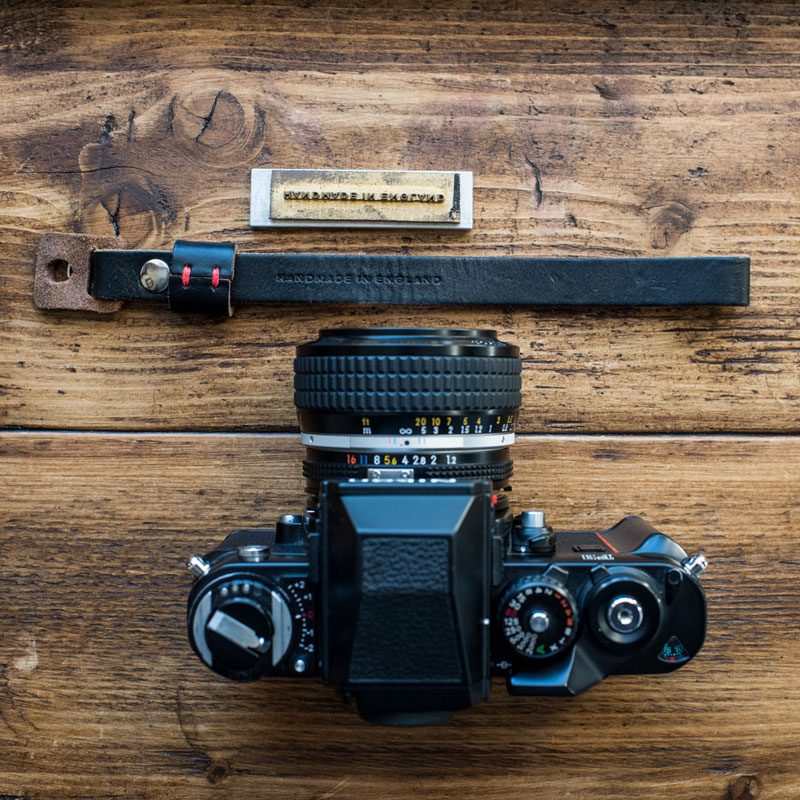
Reasons to use film
Film cameras are slow. They very often only have 1, or a handful of autofocus points, if they have autofocus at all. They are cumbersome, especially the medium format ones. Don’t even think about large format unless you have hours to kill to obtain 1 single image. Film is expensive. And time consuming, if you develop it yourself. Even the best film scanners produce a file size that is only about the same size as a cheap consumer digital camera of today. And let’s not get started on the dust issue.
With all of the cons against it, why would anyone choose to shoot film today? Well, it is because of the imperfections that make it such a beautiful medium to work with. These are the reasons we use film:
- Cost: Film and processing are expensive. Therefore, every single shot counts. How many times have you come home with hundreds, or thousands of images, many of them duplicates, or rubbish? They just clog up your hard drive, and take time to cull and organise.
- Understanding exposure: Correct exposure matters more with film. There was a time when film, especially colour negative film, had a better latitude than digital. But those days are over. Digital is king when it comes to dynamic range. You can pull the highlights out of all but the darkest shadow. And pull them down in all but the brightest scene. Because of film’s latitude limitations, one needs to think about the final image much more. What exactly do you want the final image to look like? How should the shadows look? What about the highlights?
- Knowing how to focus: Nailing focus is much harder with most film cameras. Therefore, one has to anticipate the final shot much, much more. Back in the day many people used to zone focus. Many cameras like the Rollei 35 had no way to see if the image was in focus or not. Even the Queen used to zone focus with it. I know very few people in the digital world who zone focus. Even street photographers. They simply rely on their cameras to focus for them and hope they get it right. This takes the control away from you as the photographer and gives over control to the camera. You are therefore simply a finger that presses a button.
- Patience: The anticipation of the final result. Having to wait days before you can see if your images are worthy of enlarging, or if you failed miserably. Remember, often times, it is the journey, not the destination that is the most exciting. Many of us take a digital photo, edit it, post it and forget it. All of that excitement and anticipation is over very quickly.
- No LCD screen: You will save money on a Chiropractor. I’ll be the first to admit it, I do not know how to take an image with a digital camera and not instinctively look down at the back LCD screen. I have to force myself. And even then, I fail more than I succeed. The problem with this is that you are disconnected from the world for this brief period of time. Another incredible photo may present itself in that time. And you would have missed it. It is also focusing far too much on the final product, rather than the “being in the now” that not having an LCD screen gives you.
- Investment: If you buy high quality film cameras and lenses, you will never lose money. Manufacturers are no longer making many of them and therefore, it is all about supply and demand. If you want a Leica M6, you must buy one that has already been manufactured. You will never be able to buy a new one. The same could be said for digital cameras, i.e. the Canon 1Ds Mark II will never be produced again. So why wouldn’t the value of it increase over time too? I can’t say why, but it doesn’t. Few people value a 15 year old digital camera. Just as nobody values a 15 year old laptop. There is almost no market for it. But a 35 year old Leica M6, or Nikon F will always be sought after.
- Batteries: Batteries become something you barely even think about. The amount of customers who have asked us to make larger pockets on our camera bags to house extra batteries is incredible. As a result, our pockets have grown over time and every model of bag we currently make, has large, billowy pockets. However, with film cameras, especially mechanical, or mostly mechanical, batteries have almost no relevance. They become something you need to buy once every few months, or longer. With a digital camera, you not only need to carry spares, but you need to carry a charger as well.
- Weather sealing: Weather sealing is a modern concept. The idea of weather resistant cameras is something that has only been relevant in in recent history. In the past, it simply wasn’t much of an issue. You never heard the great Steve McCurry saying, “I can’t take my Nikon FM2 out today because it isn’t weather sealed. And forget about my Nikon 105mm f2.5 lens. That will be destroyed by the Indian monsoons.” It just wasn’t an issue. With modern digital cameras, the electronics in them make them far more susceptible to damage from moisture. Hence, why you need weather sealing at every point of possible ingress. That isn’t to say that older film cameras wouldn’t suffer when they were wet, I only make this point because we have become too concerned with weather resistance. Especially since most people wouldn’t dare take their cameras out in the rain anyway. But, when you do, and when you need it, it’s there. And I completely respect that. But let’s not get so focused on that, that it detracts us from shooting more and getting better.
With most of the above points, the argument can be made that one is able to do these things with digital too. Just set your camera to manual focus, think about the exposure more, take less images overall, learn Zone Focusing and master Zone Metering, not look at the rear LCD screen, etc. And if you can do that, great. We find it difficult. It’s like driving an Aston Martin and having to constantly restrain yourself from speeding. That car was built for speed and handling. Of course you’re going to use it. It’s the same with modern digital cameras. They are brilliant, fast, precise machines. It’s silly not to use the functions they offer.
And if you’re a National Geographic photographer, you can obviously toss out everything I’ve said above, as you will simply not care about any of those issues and need the fastest, sharpest, best images you can possibly obtain from modern technology.
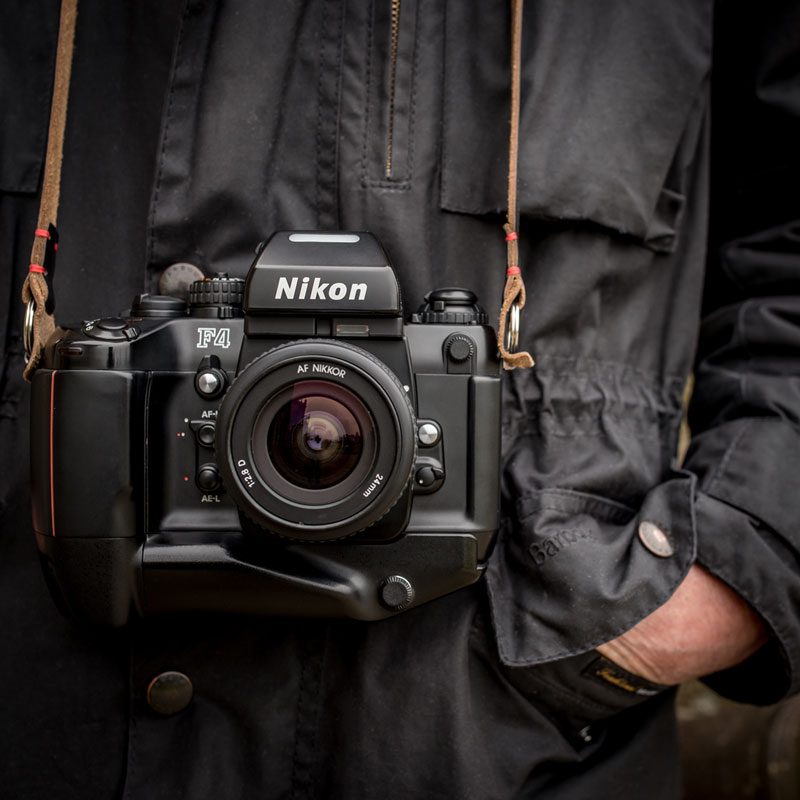
In conclusion
We use film cameras in our imagery because we want to keep film and the cameras that hold it alive. They are the last link to the old school photographers, to the old way of doing things. And yes, we all must advance and shouldn’t be scared of progress. Except in the case of the new Land Rover Defender. That was perfect the way it was!
Digital cameras were designed for instant sharing and mobility of the images they captured. They were the perfect partner of the press photographer. There is a perfection in digital photography that cannot be replicated with film and therefore they are perfect for fashion shoots as well, that are heavily manipulated in post processing. Digital cameras are far better than film at capturing any moment, no matter what the condition is. And for that, they are indispensable. But, when you really want to connect with the medium, in a way that you never have before. And when you want to slow down and take your time, there is no better way to do it.
That’s what we think anyway. And that is the beauty of art. We are all free to create using the medium that inspires us the most. If digital photography inspires you more than film, please keep shooting with it. And in 5-10 years, I may revisit this post, having changed my mind, yet again. Just like I do about which digital camera is my favourite at the moment… it’s the Fujifilm X-Pro 2. By far, without a shadow of a doubt.
-Thanks for reading,
Taylor
Co-Founder of Hawkesmill

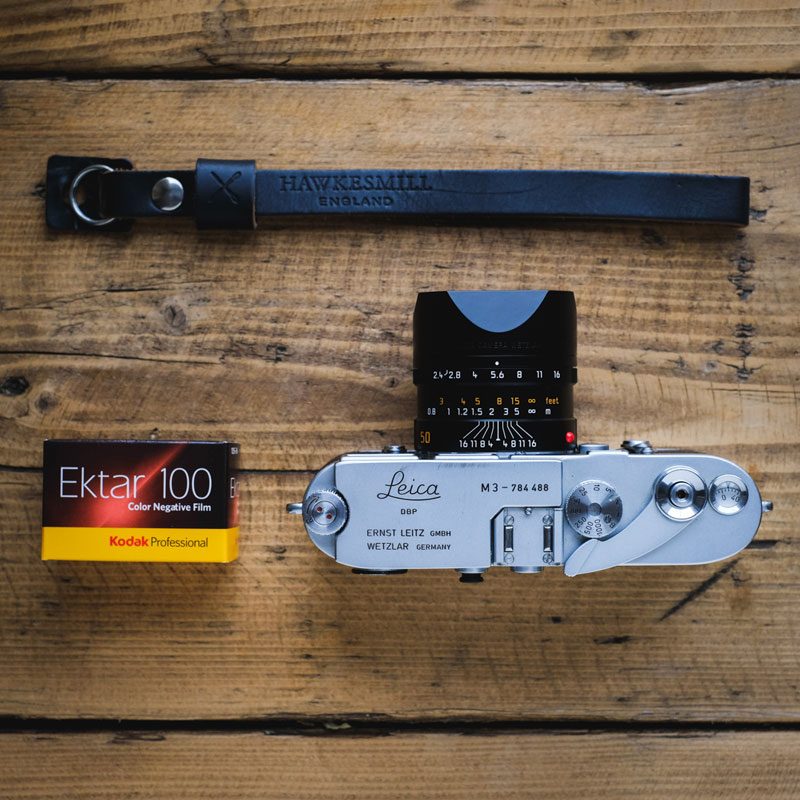
A very enjoyable read, thank you Taylor.
This is an excellent article, Taylor. Retired after a lengthy career in photojournalism — with the latter years necessarily shooting digital — I have now happily returned to film. My favorite shooter is my elderly and beloved Leica M2. I must say that my just acquired Kensington strap is its fitting and appropriately elegant companion. So, thank you for not only an enjoyable treatise but a terrific product as well.
Thank you very much. That’s brilliant Craig! We love hearing about photographers returning to film. Together we can keep the medium alive and well. Very glad you’re enjoying your strap and that M2! It was a toss up between the M2 and M3 for us. But the M2 is on the wish list! -Taylor
Well, thanks to you, Taylor, I have a new item on MY wish list. It’s your St. James’s Street Camera Bag. What a beauty that looks to be! (And, maybe I’ll get another Kensington strap for the Leica’ M2’s SLR companion – my Olympus OM-1n). Again, I applaud your excellent enterprise. I hope you’re doing well.
A camera is a time machine. An analogue camera tells the time.
Opinions will vary, but I consider the M2 to be the finest film camera of all time!